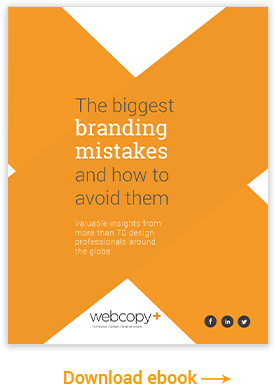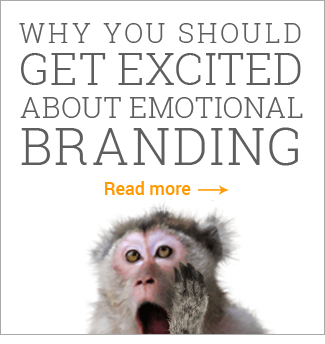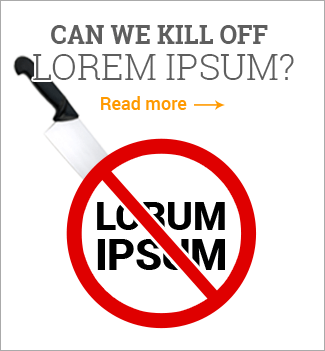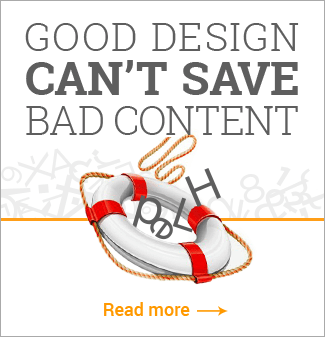
When it comes to web content, many business owners believe they can accomplish everything a professional web copywriter can — and more. However, when business owners attempt to write their own web copy, it often leads to frustration, lost time and missed opportunities.
In fact, many businesses come to Webcopyplus looking for a web copywriter after struggling to complete their web content for weeks, sometimes months. In the interim, they get their web designers to upload their old web content, or just put the project on hold. Regardless, the final outcome is usually substandard.
Since web copy development often causes designers major hassles and delays, it’s baffling to find web designers who simply don’t grasp and appreciate the value a well-versed web copywriter can bring to a project.
An article written by a Maine web designer was recently brought to my attention, in which she stated (verbatim):
Continue reading →
Found on everything from poorly translated signs and menus to bizarrely worded adverts and strange t-shirt slogans, the misuse of English can be found everywhere.
Check out this latest collection of amusingly ‘creative’ English from around the world.
There’s also a steady stream of side-splitting English at, well, Engrish.com.
Posted on Feb 17 2009 3:37 am by Web Copywriters
tags: Copywriters Writing for the Web
|
category: Writing for the Web |
Leave a comment

Why should prospects invest in your product or service? If you can make a strong claim and support it on your website, you’ve got a winning brand.
Are you the biggest? Provide the widest selection? Offer patented technology? Feature convenient locations? Or are you young and small, allowing you to churn out customized solutions swiftly, unlike your much larger and slower competitors?
Define your strengths and leverage them. And be sure you get them right because they are key to your short- and long-term success.
Paint a picture that clearly demonstrates how your prospect’s world will be easier, more lucrative, healthier, happier, etc. with you in the picture. The overall messaging can then be continually reinforced not just in your web content, but also your print materials, advertising, tradeshow presentations, press releases and so on.
Remember, web designers aren’t the only ones with the ability to shape your brand. Well-versed web copywriters can also build your brand with words.
Web content has the ability to deliver a message to prospects at the right moment — precisely when they’re looking for a product or service. Unfortunately, the right message is rarely delivered.
Self-centric copywriters and business owners are to blame.
Some copywriters believe it’s more important to win awards than for clients to win new customers. They write for themselves, disregarding key business objectives.
Meanwhile, numerous micromanaging business owners insist prospects are interested in their mission statements and corporate values. Employees have a hard time getting excited about these things, so why would consumers care?
So what engages visitors and turns them into customers? Read Web writing: The Good, Bad and Ugly.
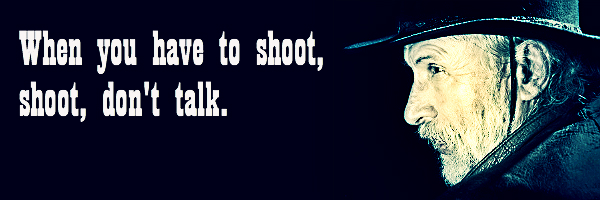
How do you get online visitors to take interest in your products or services? Write about things they care about. Most would say that’s brain-dead obvious. Yet, it seems 90% of websites miss the mark completely. The problem: self-absorbed web content. The cause: self-absorbed copywriters and business owners.
To engage prospects and turn them into customers, you need to appeal to the visitor’s self-interest — not yours.
Is Your Web Copy Written for the Right Audience?
Who is your website written for — your audience, your business, or your writer?
The following insight will help you answer this critical question, and guide you toward higher online engagement and conversion rates.

While discussing Maslow’s Hierarchy of needs at a web writing workshop, a student asked what the most powerful consumer appeals are. Great question.
I suggested sex, greed and fear top the list.
Sex Sells
First of all, does sex sell? Just ask Calvin Klien. The concept has been around as long as advertising.
However, during the past decade, it seems consumers are more sophisticated and have greater expectations of companies and their marketing ploys. Hence, to achieve the fully desired effect, flesh-induced images and suggestive word plays might require increasingly developed strategies.
Greed and Fear
As for greed and fear, they are timeless motivators. That’s because humans naturally: (a) have a desire to improve the status quo; (b) or fear losing the status quo.
Mix a person’s wallet into the equation, and you have a powerful formula to get people to act.
The Internet provides a lot of web content. It’s unlimited. And that’s a problem.
Sure, as a business, the Web extends your reach to millions of prospects around the globe. But it’s also the case with your competition. They’re always just a click or two away. It’s true in almost every market.
Faced with infinite choices, consumers are often inclined to jump on the cheapest or the biggest.
Still, your business can get a share of the action. But you need to clearly define your unique selling proposition (USP) — the distinct advantage or benefit that sets your business apart from the competition.
Identify what your business does to provide customers superior results and value. Talk about your quality, service, speed, experience, prices, customer service or selection — and convey what it means to your online visitors.
Unique business offerings drive customer demand — even on the information-inundated Web.

To clients and students alike, I always preach “less is more” on the Web. It applies to web design, web copywriting and even programming.
So I was fascinated to find an applicable quote from French aviator and writer Antoine de Saint Exupery. While reflecting on the development of airplanes some decades ago, he wrote:
“A designer knows he has achieved perfection not when there is nothing left to add, but when there is nothing left to take away.”
So true. It reminds me of another relevant quote from Thomas Jefferson: “Had I but more time, I would have written less.” Actually, Mark Twain wrote something similar: “If I had more time I would have written less.”
The common premise is web designers and web copywriters must take extra time and effort to scrap any useless elements, from extra colours to extra syllables.
Good web content isn’t about flashy graphics and fancy words. It’s about communicating key messages and getting tasks completed.
When it comes to web content, some web copywriters still clash on the classic “features versus benefits” debate.
A web copywriter might choose to stack web content exclusively with features. For instance, web content promoting binoculars might focus on certain features, such as oversized lenses, rubber coating and ergonomic design.
That can score points with consumers in terms of credibility, but the web content should not omit the benefits: low-light performance; bright, crisp and clear images from dusk until dawn; and toughness and easy handling.
For consumers to take action, they need to care. Benefits tell readers why they should care.
Benefits engage. Benefits inspire. Benefits get people to act.
Posted on Dec 21 2008 1:16 am by Web Copywriters
tags: Website Conversions Writing for the Web
|
category: Writing for the Web |
Leave a comment

Psychologist Abraham Maslow conducted lifelong research about mental health and human potential. Seeing human beings’ needs arranged like a ladder, he devised his renowned hierarchy of needs.
Here’s a breakdown of the needs and desires people try to fulfill, as compiled neatly in Chip and Dan Heath’s New York Times bestseller Made to Stick:
- Transcendence: help others realize their potential
- Self-actualization: realize your own potential, self-fulfillment, peak experiences
- Aesthetic: symmetry, order, beauty, balance
- Learning: know, understand, mentally connect
- Esteem: achieve, be competent, gain approval, independence, status
- Belonging: love, family, friends, affection
- Security: protection, safety, stability
- Physical: hunger, thirst, bodily comfort
Ensure your web content taps into these basic human needs to appeal to your visitors’ emotions. You’ll engage and convert.
Posted on Dec 17 2008 10:34 pm by Web Copywriters
tags: Website Conversions Writing for the Web
|
category: Writing for the Web |
Leave a comment






